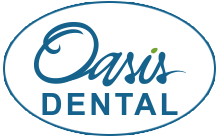 Saliva Test May Help Dentists Check for Breast Cancer
Saliva Test May Help Dentists Check for Breast Cancer
 Advantages of Salivary Testing
Advantages of Salivary Testing
Saliva Test May Help Dentists Check for Breast Cancer
Breast cancer is the second leading cause of death among women in the United States. In 2006, the American Cancer Society estimated that there would be 212,920 new cases of invasive breast cancer, and in that year, 40,970 women would die from it. Many women's lives could be saved if this cancer was diagnosed earlier, and early diagnosis could be achieved if there were more and easier opportunities to do so.
Sebastian Z. Paige and Charles F. Streckfus, DDS, MA, the authors of the study, "Salivary analysis in the diagnosis and treatment of breast cancer," published in the March/April 2007 issue of General Dentistry, the Academy of General Dentistry's (AGD) clinical, peer-reviewed journal, researched a new method of diagnosis.
They found that the protein levels in saliva have great potential to assist in the diagnosis, treatment, and follow-up care of breast cancer. And general dentists are perfect candidates to assist with this diagnosis samples because they can easily remove saliva samples from a patient's mouth during routine visits. As the AGD's Vice-President Paula Jones, DDS, FAGD says, "Since a patient visits the dentist more frequently than their physician, it makes sense that this diagnostic tool could be very effective in the hands of the general dentist."
Advantages of Salivary Testing
Salivary testing has some advantages over blood testing. The authors of the study argue that saliva is a clear, colorless liquid, while blood undergoes changes in color, which might affect test results. The authors also say that saliva collection is safe (no needle punctures), non-invasive, and can be collected without causing a patient any pain.
This method of early diagnosis is not yet approved by the Food and Drug Administration (FDA). If it does receive approval, dentists and physicians could use it to collaboratively diagnose breast cancer.
But Dr. Jones also warns that this is not the only means for diagnosis. "It would not eliminate the need for regular mammogram screening or blood analysis; it would just be a first line of defense for women," she says. "For example, if the salivary screening did show a positive result, a mammogram or other imaging test would be necessary to determine in which breast the cancer was located."
• Salivary testing is safe (no needle punctures) and can be collected without causing the patient any pain.
• Salivary testing does not require any special training or equipment.
• Patients who may not have access to or money for preventive care could easily be tested through saliva.

Original content of this reprinted with permission of the Academy of General Dentistry. © Copyright 2007-2009 by the Academy of General Dentistry. All rights reserved. Read the original article here.
